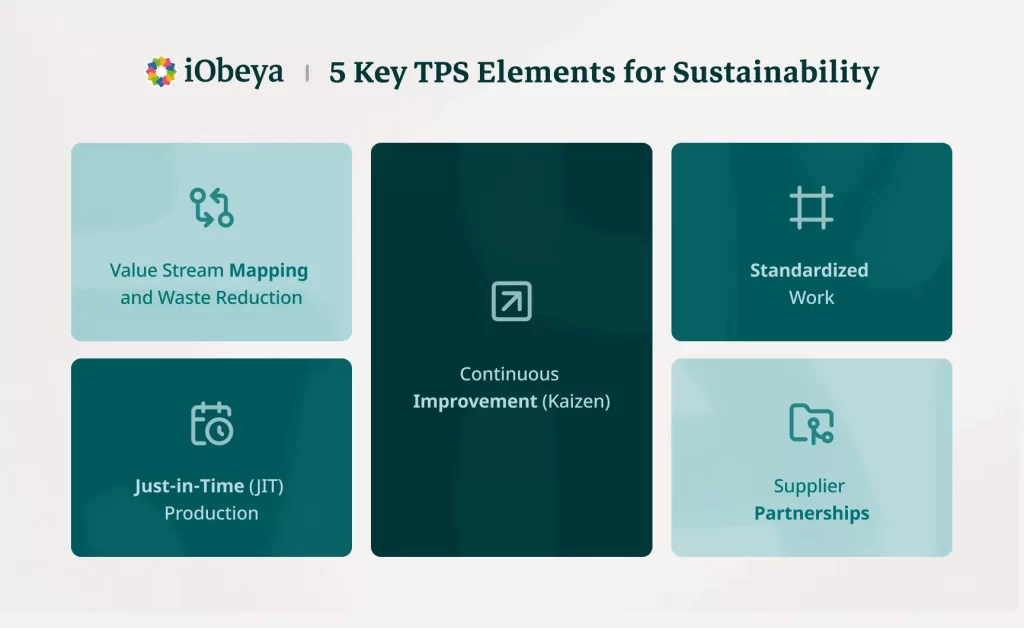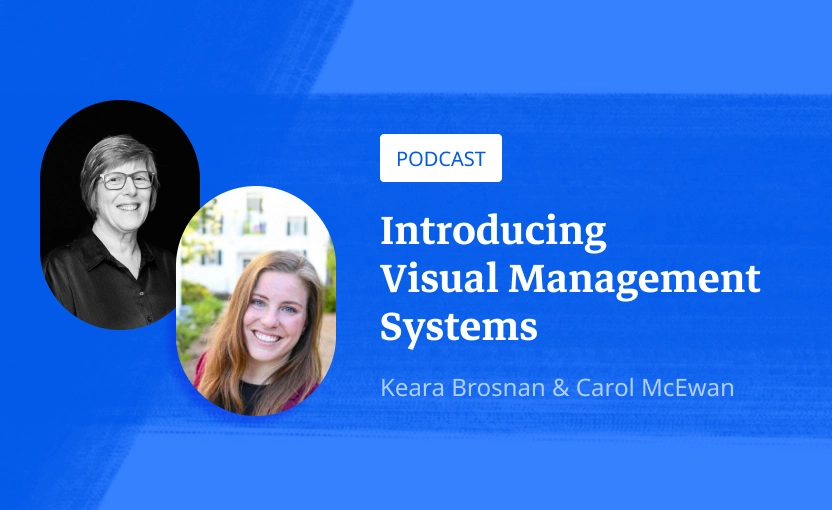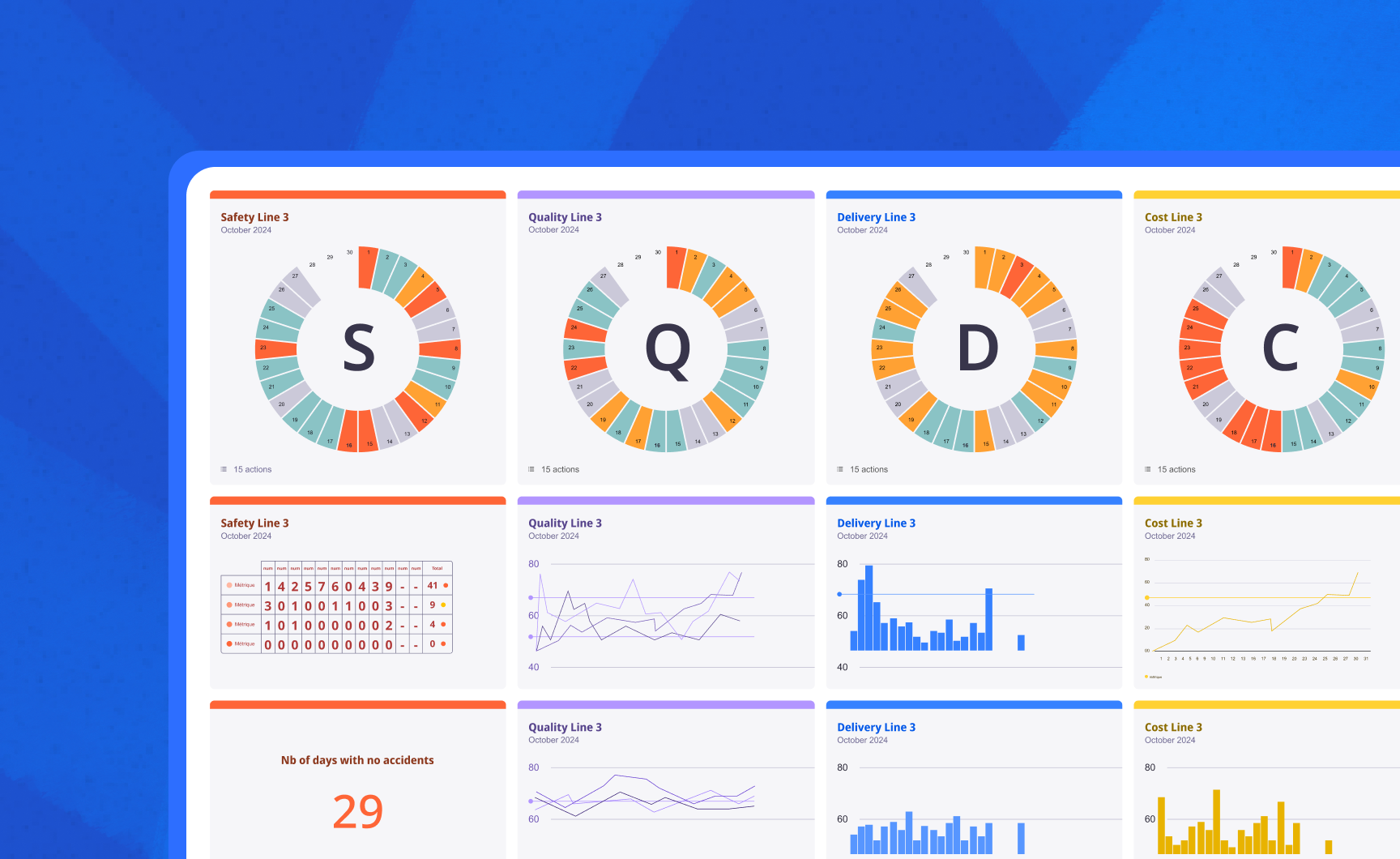Hey, let’s start your
iObeya journey!
In the world of business, the Toyota Production System (TPS) has made a profound impact, revolutionizing the way companies approach production and efficiency. This renowned methodology, developed by Toyota, has not only stood the test of time but has also adapted to the ever-evolving landscape of the modern business era. In this blog post, we will explore the history of TPS, its evolution, key elements that average enterprises can implement, and how it can contribute to sustainability and eco-friendly goals .
The Origins of The Toyota Production System (TPS)
The Toyota Production System (TPS), also known as Lean Manufacturing , originated in the 1950s in Japan. Taiichi Ohno, a Toyota engineer, is often credited with its development. TPS was born out of necessity and scarcity after World War II, when resources were limited. Toyota’s commitment to efficiency and quality led to the creation of a system that emphasized waste reduction, productivity improvement, and continuous learning.
TPS has not remained static but has adapted to meet the challenges and opportunities of the modern business world. American management theorists and quality experts had a substantial impact on the evolution of TPS. Particularly W. Edwards Deming who preached having a high-level of uniform product quality, improved product testing, and several other concepts that infiltrated into TPS.
Some key adaptations include integrating new technologies, extending TPS principles to non-manufacturing sectors, and addressing the complexities of global supply chains. For example when Kiichiro Toyoda, founder of Toyota, visited and admired how American supermarkets planned the ordering and delivery of products based upon the timing of inventory reduction. This concept evolved into what is now referred to as just-in-time (JIT) manufacturing , a fundamental tenet of TPS which we will discuss below. But one of the most significant and innovative adaptations includes leveraging TPS to help businesses achieve their sustainability and environmental goals. It seems a natural alignment as reduced scrap and rework and increased longevity of product use, which are key outputs of TPS, improves sustainability. More and more TPS practices have been aligned with sustainability goals, reducing waste, resource consumption, and emissions, and it is easy to see why.
Benefits of Implementing Elements of TPS
Overall, enterprises can see several benefits from implementing TPS:
- Increased productivity: streamline processes and eliminate waste, leading to increased productivity through efficient resource utilization.
- Reduced lead times:reduce unnecessary steps and delays in production, resulting in reduced lead times as tasks are completed more swiftly and seamlessly.
- Cost savings: minimize waste and optimize workflows contributing to cost savings as resources are utilized more efficiently and unnecessary expenses are eliminated.
- Improved product quality: emphasize continuous improvement and defect prevention, leading to improved product quality through the elimination of errors at the source.
- Enhanced employee morale: Foster a culture of employee involvement and empowerment, enhancing morale by recognizing and utilizing the skills of the workforce in process improvement.
- Greater customer satisfaction:focus on meeting customer demand and delivering defect-free products, leading to greater customer satisfaction through timely and high-quality product delivery.
Key TPS Elements for Sustainability
Taking this a step further, enterprises looking for innovative ways to minimize their environmental footprint can rely on one proven methodology, the Toyota Production System (TPS) . TPS offers a set of key elements that enterprises can implement to not only streamline their operations but also further their sustainability goals.

1. Value Stream Mapping and Waste Reduction
The principle of waste reduction is at the heart of TPS. Value Stream Mapping is a powerful tool for identifying non-value-added activities within processes. By eliminating waste, companies can significantly reduce resource consumption and lessen their environmental impact. Streamlining operations not only conserves resources but also boosts efficiency, ultimately contributing to sustainability objectives.
2. Just-in-Time (JIT) Production
JIT is a cornerstone of TPS, emphasizing the importance of producing only what is needed, precisely when it’s needed. This practice not only reduces inventory costs but also minimizes waste. When executed well, JIT reduces waste by keeping inventory to a minimum, plus helps to prevent items from going beyond their shelf-life or expiration date thereby reducing scrap, thus improving sustainability. By avoiding overproduction and excess inventory, enterprises cut down on unnecessary resource consumption and lower energy consumption. JIT isn’t just a cost-saving strategy; it’s an eco-friendly one too.
3. Continuous Improvement (Kaizen)
4. Standardized Work
Standardized work is a TPS element that helps reduce errors and defects in processes. This reduction is crucial as it leads to fewer resource-intensive corrective actions. By adopting standardized work practices, enterprises not only enhance product quality but also minimize the environmental impact associated with errors and rework.
5. Supplier Partnerships
Collaboration is key to sustainability success. TPS principles can extend to suppliers, fostering partnerships that focus on reducing waste and emissions throughout the supply chain. By working together to minimize environmental impact, businesses can effectively support their sustainability efforts and drive positive change on a broader scale.
The Toyota Production System has not only transformed the way businesses operate but has also adapted to the changing demands of the modern business era, especially as technology continues to evolve and digitization becomes a critical component to remain competitive. The core principles of TPS, particularly when implemented with digital technologies can lead to increased efficiency, cost savings, and improved product quality. Furthermore, TPS is a valuable ally in achieving sustainability and eco-friendly goals, as it emphasizes waste reduction, resource efficiency, and a culture of continuous improvement.
By embracing TPS principles and digitization, especially with a tool like iObeya, businesses can streamline their operations and make a positive impact on the environment while maintaining competitiveness.







